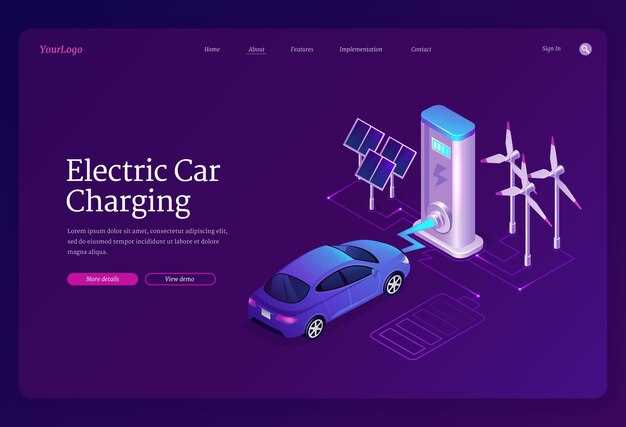Hydrogen-powered vehicles offer a compelling solution to the challenges of sustainable transportation. As we shift towards greener energy sources, hydrogen fuel cells present an alternative that combines efficiency with eco-friendliness. With water vapor being the only byproduct when hydrogen converts to energy, embracing this technology not only reduces greenhouse gas emissions but also addresses the growing demand for cleaner vehicles.
The current advancements in fuel cell technology enhance performance and reduce costs. Recent studies indicate that the global hydrogen vehicle market is projected to reach $25 billion by 2026, reflecting a growing interest in this clean energy source. Major automotive manufacturers are investing heavily in developing hydrogen infrastructure and vehicle models, demonstrating a strong commitment to this emerging technology.
Investing in hydrogen-powered vehicles not only supports environmental goals but also sparks economic growth. The development of hydrogen infrastructure, such as fueling stations, can generate jobs and stimulate local economies. Policymakers and industry leaders should prioritize collaboration to create a robust network that encourages the adoption of hydrogen fuel cells, making these vehicles more accessible to consumers.
In conclusion, focusing on hydrogen-powered vehicles establishes a path towards sustainable transportation. By increasing investment in technology and infrastructure, communities can drive the transition to a cleaner future while reaping economic benefits.
Understanding Hydrogen Fuel Cell Technology in Vehicles
Hydrogen fuel cell technology offers a clean and efficient energy solution for vehicles. It operates on a straightforward principle: hydrogen gas reacts with oxygen in a fuel cell, producing electricity, water, and heat. This process generates zero harmful emissions, making it an attractive alternative to traditional internal combustion engines.
The fuel cell consists of an anode, a cathode, and an electrolyte membrane. At the anode, hydrogen molecules split into protons and electrons; the protons pass through the electrolyte membrane while the electrons create an electric current, powering the vehicle. At the cathode, oxygen from the air combines with the protons and electrons to produce water vapor as a byproduct.
Hydrogen fuel cell vehicles (FCVs) refuel quickly, taking approximately 3 to 5 minutes, similar to conventional gasoline cars. This rapid refueling contrasts with the longer charging times associated with battery electric vehicles (BEVs). FCVs typically offer a range of 300 to 400 miles on a full tank, making them suitable for long-distance travel.
The infrastructure for hydrogen refueling is expanding, with numerous stations being installed globally. Areas with dense networks of hydrogen stations, such as California and parts of Europe, provide convenient access for FCV users. Continuous investment in this infrastructure will enhance the feasibility and attractiveness of hydrogen-powered vehicles.
Cost-effective hydrogen production methods are key to the future of fuel cell technology. Green hydrogen, produced through electrolysis using renewable energy, presents a sustainable option. Efforts to lower production costs and increase efficiency are ongoing, aimed at making hydrogen a competitive energy carrier.
As more automakers develop hydrogen fuel cell models, consumer awareness will grow. Current advancements focus on improving fuel cell durability, reducing costs, and enhancing overall vehicle performance. Public and private investments will play a significant role in advancing hydrogen technology and its widespread adoption.
Challenges in Hydrogen Production and Distribution
Addressing the challenges in hydrogen production and distribution requires a focused approach to enhance sustainability and efficiency.
Hydrogen can be produced through several methods, but each has its drawbacks:
- Steam methane reforming (SMR): This is the most prevalent method, yet it emits significant CO2. Transitioning to low-carbon processes is necessary.
- Electrolysis: While it generates clean hydrogen using renewable energy, the current cost of electrolyzers remains high. Innovations in technology can help lower these costs.
- Biomass gasification: This method can be sustainable, but it often faces issues related to feedstock availability and land use.
Storage and distribution of hydrogen add another layer of complexity:
- Transportation: Hydrogen requires specialized infrastructure. Liquefaction or compression is necessary, both of which involve energy investments.
- Pipeline networks: Existing natural gas pipelines can be adapted for hydrogen, but stringent safety standards must be met to prevent leaks.
- Refueling stations: The limited number of hydrogen refueling stations hinders vehicle adoption. Expanding this network focuses on strategic urban areas.
Collaboration between governments and industries can accelerate research in hydrogen solutions. Incentives for developing clean production technologies and establishing distribution networks can stimulate growth.
By investing in innovative methods and infrastructure improvements, the hydrogen sector can overcome present challenges, fostering a cleaner transportation future.
Comparative Analysis: Hydrogen Vehicles vs. Electric Vehicles
Hydrogen vehicles excel in refueling speed, taking about 5 minutes to fill up, comparable to gasoline cars, whereas electric vehicles (EVs) vary significantly in charging times, from 30 minutes at fast chargers to several hours at home. This makes hydrogen vehicles a more practical choice for long-distance travel and quick pit stops.
Energy density serves as another critical differentiator. Hydrogen boasts a higher energy density than batteries, allowing for longer ranges on a single tank. Some hydrogen vehicles can travel over 400 miles, while most EVs average between 250 to 350 miles per charge. This range advantage appeals to consumers prioritizing long-range capability.
Environmental impact also varies. Hydrogen can be produced through renewable sources like wind and solar, making it a clean choice. However, many current hydrogen production methods rely on fossil fuels, which can diminish its environmental benefits. In contrast, EVs are often charged with grid electricity that may stem from renewable sources or fossil fuels, affecting their overall ecological footprint.
Cost considerations indicate that hydrogen fuel cell vehicles (FCVs) often come with higher purchase prices compared to comparable EVs. Additionally, hydrogen infrastructure, such as refueling stations, is limited, which can hinder the market’s growth and accessibility. Electric vehicles benefit from widespread charging infrastructure, allowing for greater integration into daily life.
Maintenance and longevity also play a role. Hydrogen fuel cells have fewer moving parts than traditional engines, potentially reducing maintenance costs. Electric vehicles, however, may require regular battery replacements, which can be costly, but they often come with long warranties on batteries, providing peace of mind for consumers.
Ultimately, both drivetrain technologies have unique advantages and downsides. Hydrogen vehicles provide swift refueling and extended range, appealing for long-distance travel, while electric vehicles enjoy broader infrastructure and usually lower operation costs. Consumer preference will likely guide which technology takes the lead as advancements in both areas continue.
Current Market Trends and Adoption Rates of Hydrogen Vehicles
In 2023, the hydrogen vehicle market shows promising growth, driven by increasing investments and technological advancements. Major automotive manufacturers like Toyota, Hyundai, and Honda lead the way, offering models such as the Toyota Mirai and Hyundai Nexo. These vehicles demonstrate the feasibility of hydrogen as a clean fuel alternative.
As of late 2022, global sales of hydrogen fuel cell vehicles reached approximately 30,000 units, marking a notable increase from previous years. The demand is particularly robust in regions like Europe, Japan, and South Korea, where government initiatives support hydrogen infrastructure development.
In Europe, countries such as Germany and France focus heavily on expanding hydrogen refueling stations. Germany boasts over 100 operational stations, and the European Commission plans to install 1,000 stations by 2025. This infrastructure expansion directly influences consumer confidence and adoption rates.
Japan remains a frontrunner with its ambitious “hydrogen highway” concept, aiming for widespread adoption of hydrogen vehicles by 2030. Its investment strategy emphasizes the integration of hydrogen into public transportation, promoting innovation and early adoption.
Market trends indicate a shift towards fleets using hydrogen fuel cells. Companies like Amazon and Walmart explore hydrogen-powered delivery vehicles, recognizing the benefits of lower operational costs and reduced emissions. This expansion into commercial sectors accelerates overall adoption.
Despite its potential, challenges persist. Concerns over hydrogen production methods and economic feasibility hinder broader acceptance. The market will need to address these issues through sustainable production techniques and competitive pricing.
In conclusion, current market trends favor the growth of hydrogen vehicles, supported by government policies and increasing investment. Continued focus on infrastructure development and sustainability will pave the way for higher adoption rates in the coming years.
Infrastructure Development for Hydrogen-Powered Transportation
To accelerate the adoption of hydrogen-powered vehicles, governments and private sectors must prioritize building a robust hydrogen infrastructure. Start by increasing the number of hydrogen refueling stations. The current count is around 450 globally; expanding this network to at least 1,500 stations by 2030 would significantly improve convenience for consumers.
Investment in production facilities for hydrogen is crucial, focusing on green hydrogen generated from renewable sources. Establishing electrolysis plants powered by solar or wind energy will lower costs and increase production efficiency. Aim to produce 60 million tons of green hydrogen annually by 2040 to meet future demands.
Collaboration between government entities and automotive manufacturers is vital. Joint ventures can facilitate the sharing of resources and expertise, enhancing technology development. Establish partnerships with universities and research institutions to conduct studies on hydrogen storage and transport solutions that maintain safety and efficiency.
To better understand economic viability, review table data on hydrogen infrastructure investments compared to fossil fuel alternatives.
| Investment Sector | Current Investment (USD) | Projected Investment by 2030 (USD) |
|---|---|---|
| Hydrogen Refueling Stations | 600 million | 3 billion |
| Hydrogen Production Facilities | 1 billion | 10 billion |
| Research and Development | 300 million | 2 billion |
Streamlining regulations for hydrogen technology is another important step. Advocate for standard safety protocols and certifications that can ease the path for new investments. Simplified permitting processes will encourage the construction of refueling stations and production facilities.
Finally, raise public awareness about hydrogen vehicles through educational campaigns. Highlight benefits such as lower emissions, energy efficiency, and long-range capabilities. Building public acceptance will drive consumer demand and support necessary infrastructure investments.
Environmental Impact and Sustainability of Hydrogen Fuel
Hydrogen fuel presents a clean alternative to conventional fossil fuels, significantly reducing greenhouse gas emissions. Switching to hydrogen-powered vehicles can lower carbon dioxide emissions by up to 90% compared to gasoline-powered cars, primarily if hydrogen is produced from renewable sources like wind, solar, or water. Implementing these methods accelerates the transition to a zero-emission transportation sector.
Water vapor and heat are the only byproducts from hydrogen fuel cells, eliminating pollutants associated with combustion engines. This transition contributes to improved air quality in urban areas, where vehicle emissions smog and health risks are prevalent. By reducing nitrogen oxides and particulates, hydrogen adoption promotes healthier living conditions.
Production methods significantly influence hydrogen’s environmental sustainability. Steam methane reforming, while common, emits carbon dioxide unless coupled with carbon capture technologies. Conversely, electrolysis powered by renewable energy distills hydrogen cleanly. Investing in green hydrogen initiatives enhances overall sustainability and reduces dependency on fossil fuels.
Infrastructure development for hydrogen fueling stations is crucial. Governments and private sectors should prioritize investments in hydrogen refueling infrastructure to ensure accessibility. Expanding networks can stimulate consumer interest and increase the adoption rate of hydrogen vehicles, leading to economies of scale that further reduce costs.
Overall sustainability hinges on integrating hydrogen solutions with existing renewable energy systems. Establishing partnerships across industries encourages shared advancements in technology and resources. As the hydrogen economy expands, it fosters innovation and job creation, contributing positively to the economy.
Continued research in hydrogen storage and transport further enhances efficiency, minimizing potential environmental impacts. Organizations must focus on creating safe and sustainable practices for handling and distributing hydrogen. As improvements arise, they pave the way for more widespread use of hydrogen as a mainstream energy source.






